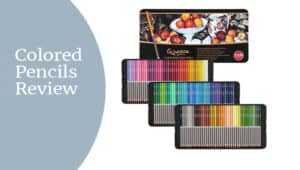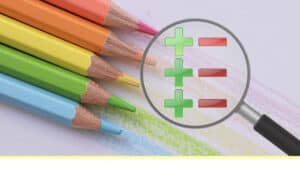
How to check your new colored pencils for damage and quality.
You just received your online colored pencil order. This article is about how you can carefully check your new colored pencils to ensure their safe arrival, promised quality, and damage-free. I’ll share a personal story, lesson learned, and four easy steps you can follow to inspect the quality of your colored pencil delivery and the types of evaluations you can make to ensure that your colored pencils are just as you expected, perfect and ready to enjoy.
Check Colored Pencils for Damage
Table on Contents
Other resources. Check out other supporting resources on ColoringButterfly.com that you might enjoy.
- 11 Ways to Spot Fake Coloring Books on Amazon (Checklist)
- Guide to Using Colored Pencil Set Reviews (Step-by-Step)
- Guide to Amazon Colored Pencil Reviews (Fake vs. Trustworthy)
- Buying Colored Pencils? Everything You Need Know (Guide)
- 13 Adult Coloring Best Practices You Can Immediately Use
Table of Contents
ToggleColored Pencil Order Gone Wrong
This story is about a pencil order gone wrong and the lessons I learned. Over the years, I have always been so excited to order and receive my new colored pencils, coloring book or supplies, and I open the box, take out the contents and start using them. That is what I did until I received a shipment of colored pencils in early October of that year.
Usually, I buy all my coloring pencils, coloring books, and coloring supplies on Amazon. I found a set of 75-count pencils that I wanted that was 60% less than what I was seeking from Amazon. I ordered the pencils, waited ten days, and they arrived. This is what I found:
- Shipping box damage. The box was thin, with two of the corners partly crushed corners. Both sides of the box were taped with two short strips of boxing tape.
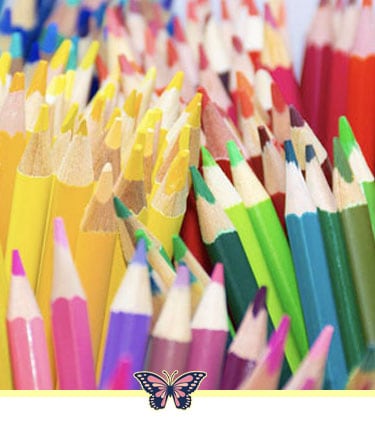
- No inside-the-box product protection. When I opened the box, the pencil box was all by itself with no bubble wrap or other stuffing to protect the pencil box/tin.
- Dinged pencil tin with unique wrapping. The pencil box was dinged (bent) and wrapped in plastic food cling wrap.
- Missing and used pencils. When opening the pencil tin, I found four pencils missing and many of the pencils that had been used and sharpened. The pencils were just a mess.
- The pencils were fake. When I looked closer, the pencils were not even the brand I had ordered. Yes, the pencil tin had the same look as the pencil set I had ordered, but the printing of the pencils was shady.
- Photocopied brochures. The brochures in the box were bent and used, and I found misspellings in the copy, and the pictures were fuzzy. The brochure had been photocopied.
- No company to call and a bogus address. I was not happy, and I wanted to return the pencils immediately. When I looked at the shipping label, hoping to find a phone number to call to begin the return, there was no phone number. So I looked at the address, looked on Google Maps and found a run-down building. I had no recourse.
Important lessons learned from the order gone wrong. While the order was wonky, there were valuable lessons learned. I learned valuable lessons about ordering and taking responsibility for doing my due diligence before and after online ordering. Lessons like.
- A lower price does not mean a “good deal.”
- Buy ALL my coloring supplies from known sources (e.g., Amazon.com, DickBlick.com, CheapJoes.com, and local stores that carry coloring supplies).
- Check all coloring supplies upon receipt to see if all is in order.
- Do my homework on the merchant/shipper before I buy.
- Read the reviews.
- And more.
Since that experience I shared above, I now have a habit/routine I follow with I first open the shipping box/package with my new coloring pencil order. I have written a series of articles to share what I learned and how I approach online shopping for coloring supplies today. [TOC]
Four Easy Steps to Check Damage
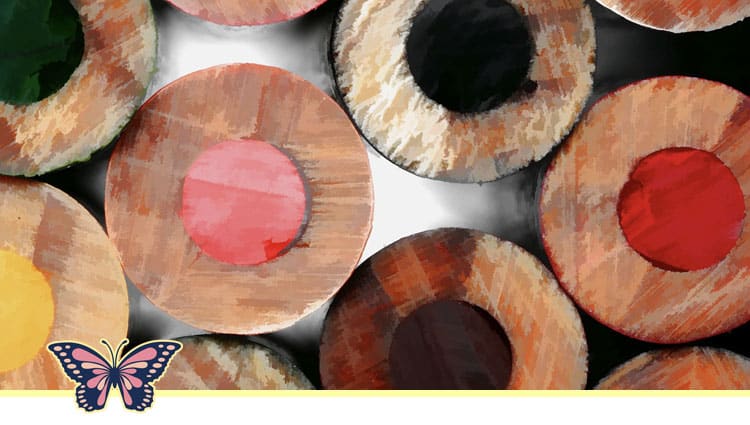
In this section, I will share my four-step process of how to check brand-new colored pencils for damage. This process will take ten or fewer minutes. When you first open the box of colored pencils, you can do a few tests to examine the set and pencil characteristics. If one or more of the following tests fail, use caution in moving forward with investing in your purchase. [TOC]
Step 1: Check the Pencil Tin/Container for Damage
A vast majority of colored pencil sets purchased are made online, and we can have the pencils in our hands in just a few days. When you open the delivery package, create a checklist of how to check new colored pencils for damage to confirm they were delivered as new as promised, free in good condition. If you find any of the following issues, take a picture with your camera for evidence. The checklist of questions is as follows:
- Was there any damage to the delivery box? (e.g., partially/fully opened, smashed, crushed, bent, box torn)
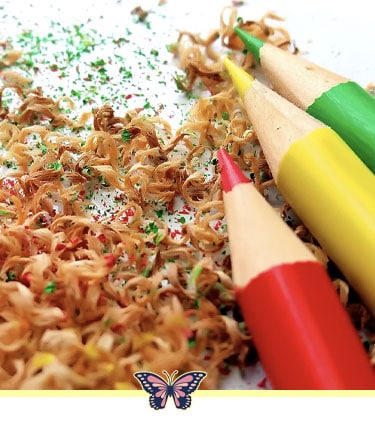
- Was there any damage to the contents of the box? (e,g., tin bent, box torn, wood chipped, hinge fracture)
- Was the cardboard covering the pencil case damaged? (e.g., torn, taped, ripped)
- Were the cellophane/brochures ripped/missing? (e.g., see if the colored pencils are missing brochures, cellophane etc.) [TOC]
Step 2: Check the Colored Pencils for Visual Damage
Colored pencils are fragile and can sustain damage by being dropped and bumped at the factory, packing, shipping, transit, and delivery. Ask yourself the following questions to check your colored pencils for damage and quality control.
- Are there any pencil shafts that are broken? (When a pencil case is dropped, a pencil can be easily broken. Look for clean breaks, cracks, splinters, and chips.)
- Are there any pencil pigment cores broken? (When a pencil case is dropped, a pencil can have its cores broken in multiple places besides the tip.)
- Are all the pencils in the box? (Sometimes, when packed at the factory, a pencil may not have been packed. OR if the pencil set was sent back to the factory, it may have been set back missing.)
- Do you have any duplicate colors? (On several occasions, I have had duplicates of the same color in a pencil set.)
- Are there any pencils that have been sharped or used? (Look to see that those pencils have not been used previously.) [TOC]
Step 3: Check the Colored Pencil Barrel
Check first to see if the pencil barrel/shaft is straight. Conduct the following tests check colored pencils for damage. If your pencil fails any of the following tests, it is not straight and will cause a shortened life span of the pencil because they are more difficult to sharpen. Ask yourself the following:
- Does the pencil lay flat on the table? (Every inch/cm of the pencil should be touching the surface.)
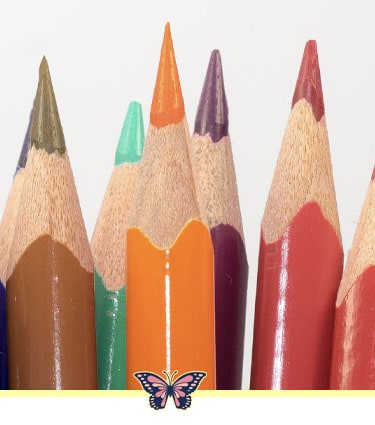
- Does the pencil roll evenly? (Roll the pencil. If the pencil wobbles, it is warped and not straight.)
- Do the pencil shafts completely touch each other when laid side by side? (When the pencils are laid side by side, there should be no space between them. If there is, they are warped. This will shorten the pencil’s life because they are hard to sharpen.)
Check the barrel/shaft for damage. Look carefully at each pencil. These problems or blemishes can be signs of broken cores or fracture wood that will shorten the pencil’s life during use or sharpening. Ask yourself these questions to confirm the colored pencils are free of damage:
- Do you see any wood splitting on either end of the barrel?
- Do you see anywhere the pencil was broken in transit?
- Does the shaft exhibit any chips? [TOC]
Step 4: Check the Colored Pencil Core
Check the pencil core center. When you take the colored pencil from the container, you will notice the colored lead, often referred to as the pigment core. Many pencils come sharpened. Take the pencil in your hand and look at the backend/top of the pencil. This is the end of the pencil that is not sharpened.
- Can you see the pigment core? If yes, look to see if the pigment core is in the center of the pencil barrel/shaft. The more off-center the core is, the more likely the core is going to break/fracture on you during sharpening and coloring.
- Suppose you can’t see the pencil core do this. If you can’t see the pigment core because an endcap covers it, that’s ok. You won’t be able to do this test. A quick way to test a group of pencils is to take had full of five or more and look at the pencil ends at one time. This will give an excellent chance to see how centered the pigment cores look for the set.
Check the pigment core color. Carefully look at the color of the identification name on the barrel, the lacquer on the endcap, and the color on the barrel. Do they match each other? Sometimes they are spot on. Other times they are close; other times, they are very different. If you are buying an off-brand/cheaper brand, this is where you have to be incredibly observant. Can this ever happen to the more expensive brands? Not that I have seen. [TOC]
Decision Time
You have just completed your review of your new colored pencils. Are you satisfied with the brand-new pencils? Or did you identify one or more problems with the order?
- A budget set can have problems. You may decide to keep the order if you have a budget set of pencils. You get what you pay for.
- You have confirmed damage. If you are unhappy with the order, you can return the colored pencils for damage. You can reorder the pencils or choose a different brand of colored pencils.
- No damage, but quality issues. You have reviewed your colored pencils for damage, but the quality is not what you expected. You can reorder the pencils or choose a different brand of colored pencils.[TOC]
If you like this article, please share it with others.


